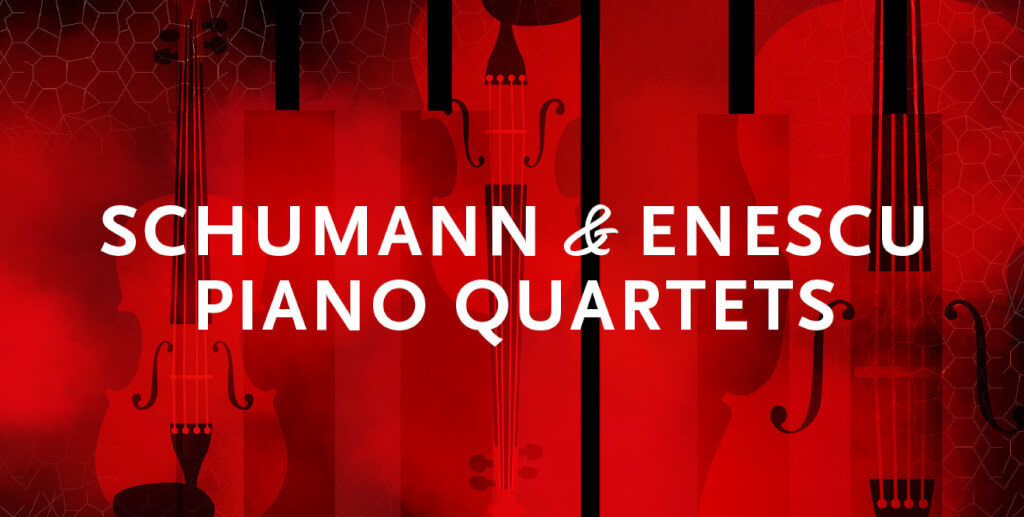Schumann & Enescu Piano Quartets
Chamber Concert
Saturday, April 8, 2023, 3:00 p.m.
Steinway Piano Gallery Detroit, 2700 E West Maple Rd, Commerce Charter Twp, MI 48390


Saturday, April 8, 2023, 3:00 p.m.
Steinway Piano Gallery Detroit, 2700 E West Maple Rd, Commerce Charter Twp, MI 48390
Join us on April 8, 2023, at Steinway Piano Gallery for the chamber music concert “Schumann & Enescu Piano Quartets” featuring compositions by George Enescu and Robert Schumann.
George Enescu (1881-1955)
Piano Quartet No. 2 in d minor, Op. 30 (1944)
I. Allegro moderato
II. Andante pensieroso ed espressivo
III. Con moto moderato—Allegro agitato
INTERMISSION
Robert Schumann (1810–1856)
Piano Quartet in E-flat Major, Op. 47 (1842)
I. Sostenuto assai—Allegro ma non troppo
II. Scherzo: Molto vivace—Trio I—Trio II
III. Andante cantabile
IV. Finale: Vivace
Piano Quartet No. 2 in d minor, Op. 30 (1944)
Program Note by Marian Tănău
Enescu completed his Piano Quartet No. 2 in May 1944 while he was at his villa near Sinaia, Romania. At the time, Romania was in the middle of one of the worst periods of the Second World War. In contrast with the tumultuous time, the Piano Quartet is full of tranquility and peace. The work is dedicated to Gabriel Fauré, who was Enescu’s composition teacher during his days at the Paris Conservatoire.
The composition was premiered on October 21, 1947, at the Library of Congress in Washington, D.C., by the Albeneri Piano Trio and guest violist Milton Katimus.
The quartet is written in three movements: Allegretto moderato, Andante pensieroso ed espressivo, and Con moto moderato—Allegro agitato.
The first movement is in the key of d minor and has the structure of a sonata form. The second movement is composed in E Major and has the form of a three-part song. The last movement is an agitated fast movement in free sonata form. It is composed in d minor but ends with a change to D Major in the coda.
Enescu liked to compose cyclical works, and this piece is no exception. The idea presented in the opening of the first movement gets developed in the thematic content of the entire quartet, with the initial idea recurring and incorporated in various other sections of the work.
Piano Quartet in E-flat Major, Op. 47 (1842)
Program Note by Jonathan Blumhofer
Schumann’s Piano Quartet dates from the “chamber music year” of 1842, which also saw the completion of the three string quartets and the Piano Quintet. If the latter is, perhaps, the more brilliant of the two works for keyboard and strings, there’s at least no faulting the sweeping lyricism, deep reservoirs of emotion, and spectacular technique to be found on nearly every page of the Quartet.
Its first movement opens with a noble, chorale-like theme in the strings punctuated by tolling octaves in the piano. This flows directly into the main body of the movement, a brisk Allegro marked by a snappy opening figure that transforms into a rather lyrical tune played by cello and violin over a chugging piano accompaniment. Its second theme falls into two parts: a rising scale, followed by a descending arpeggio. It’s often heard in canonic textures or in the vicinity of a choral-like cantus firmus.
The brisk second movement channels Schumann’s friend Mendelssohn’s “elfin” style, here, though, a bit darker and dourer. It’s sprightly and whimsical, all the same, filled with impetuous energy that’s only interrupted by the two trio sections that pop up in the middle.
In the third movement, Schumann’s considerable gifts as a tunesmith are fully on display. The cello opens with a gorgeous, expansive melody that’s passed to each member of the quartet and heard with slightly varied accompaniments in each iteration. In the middle comes a striking, devotional passage that seems to recall late Beethoven, but does little to dispel the music’s sense of yearning.
The brilliant finale offers two contrasting ideas: a lively, extroverted fugato and a more ambiguous, songful tune. Neither really wins out—the blazing coda pays homage to both—but perhaps that’s the point. Musical complexity and contradiction are but a reflection of the same human characteristics, a fact of which Schumann was well aware.